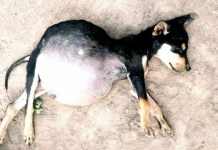Cats and dogs are wonderful animal companions. They offer us companionship, protection and unconditional love. But if you’re one of the millions of people who owns a pet, you also know that they can shed—a lot. If you suffer from allergies or simply can’t stand the sight of pet hair, this can also be a big nuisance.
Why Does My Pet Shed?
Pets shed for many reasons. The most common reason is to regulate their body temperature. When it’s hot outside, your pet’s skin will loosen and their fur will fall out in order to cool them down. In the winter, their fur will thicken to keep them warm.
So why do some pets shed more than others? It can depend on their breed, age, health, and even the season. For example, shedding is usually heaviest in the spring and fall as that’s when temperatures are changing the most.
Cleaning Tips to Keep Your Home Pet Hair-Free
While you may have come to accept shedding as part of life with a pet, it doesn’t mean you have to live in a constant state of pet hair chaos. There’s no way to completely stop your pet from shedding, but there are ways to minimise the amount of hair they lose—and keep your home clean in the process. Here are six tips for keeping your home pet hair-free:
1. Groom your pet regularly
Regular brushing or combing is one of the best ways to reduce shedding. It not only helps remove loose hair, but also stimulates the skin and distributes natural oils, which can help keep your pet’s coat healthy and shiny. How often you need to groom depends on your pet’s breed and coat type. It’s also a good opportunity to check for any mats or tangles that could cause your pet discomfort.
If necessary, you can consult with your veterinarian or groomer for specific recommendations regarding grooming frequency and techniques. You can also try using a leave-in conditioner or anti-shedding spray on your pet’s coat.
2. Vacuum regularly with the right vacuum
Vacuuming is another key step in reducing shedding—but not all vacuums are created equal when it comes to picking up pet hair. Look for a vacuum with powerful suction and a roller brush designed specifically for picking up pet hair (many models now have this feature). And if possible, invest in a cordless vacuum, which will make quick work of small messes and is much easier to manoeuvre around furniture than a bulky upright model.
Pay special attention to areas where your pet likes to spend time, such as their bed or your couch. If possible, use a vacuum with a HEPA filter to trap even more pet hair and allergens.
3. Keep your pet well-fed
A healthy diet is important for all pets, but it can be especially helpful in reducing shedding. That’s because a well-nourished animal will have a shiny, lustrous coat—and healthy skin and fur are less likely to shed excessively.
Talk to your veterinarian about the best diet for your particular pet, and be sure to avoid any foods that may trigger allergies or other health problems.
4. Bathe your pet as needed, but not too often
Frequent bathing can actually lead to excessive shedding by stripping away natural oils from your pet’s fur. How often you need to bathe your animal depends on its breed and activity level—once every few weeks is usually sufficient for most pets.
When you do bathe them, use a gentle shampoo designed specifically for animals and rinse thoroughly to remove all traces of soap (which can irritate their skin). And always towel-dry your pet as much as possible before allowing them to air-dry or using a blow-dryer (on the lowest heat setting) to speed up the process.
5. Keep them cool and comfortable
Extreme temperatures can cause animals to shed more than usual—so if you live in a hot climate, make sure your pet has access to shade and fresh water at all times during warm weather months. In cooler weather, provide them with a cosy bed or blanket to snuggle under when they sleep so they don’t get chilled (which can also lead to excess shedding).
And if you have both cats and dogs in your household, be aware that some breeds of dogs (like Chow Chows) have thick coats that make them more susceptible to heatstroke—so take extra care in hot weather to keep these pups cool and comfortable.
6. Minimise stressors in their environment
If your pet is constantly shedding, it could be a sign of stress. Common stressors in a pet’s environment include loud noises, changes in routine, lack of socialisation, and insufficient exercise. If you think your pet is stressed, consult with your veterinarian to see if there are any changes you can make to reduce their stress.
7. Wet mopping and dusting
Wet mopping is one of the best ways to clean hard floors that are covered in pet hair. The moisture will help to pick up all the loose hair, while the cleaning solution will break down any stuck-on dirt and grime.
When dusting surfaces in your home, you can also use a damp cloth or sponge instead of a dry dust cloth or feather duster. The moisture will help to grab hold of any loose hairs so that they don’t just end up floating back down onto surfaces after you’ve dusted them. This trick works especially well on ceiling fan blades, which tend to collect a lot of fur due to their spinning motion.








